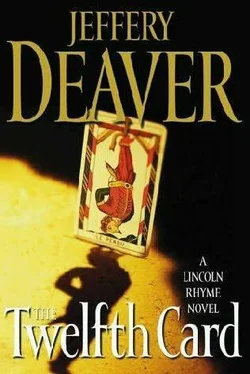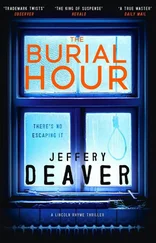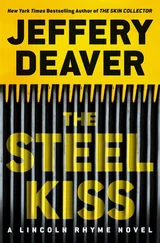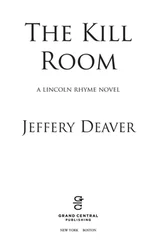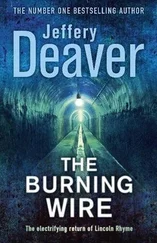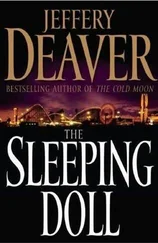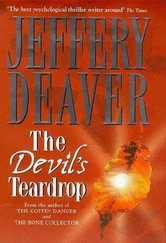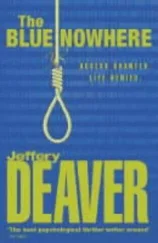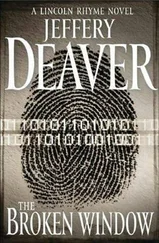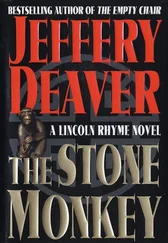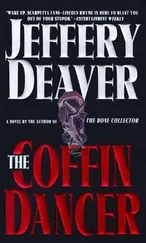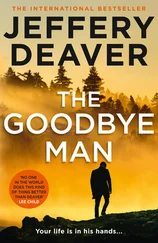They’d also heard from several people at the African-American museum. Dr. Barry hadn’t mentioned to any employees that another patron was interested in the 1868 Coloreds’ Weekly Illustrated . Nor had the museum phone records revealed anything; all calls went into a main switchboard and were directed to extensions, with no details kept. The incoming and outgoing calls on his cell phone offered no leads either.
Cooper told them what he’d learned from the owner of Trenton Plastics, one of the country’s largest makers of plastic shopping bags. The tech related the history of the smiley-face icon, as told to him by the company’s owner. “They think the face was originally printed on buttons by a subsidiary of State Mutual Insurance in the sixties to boost company morale and as a promotional gimmick. In the seventies, two brothers drew a face like it with the slogan Be happy . Sort of an alternative to the peace symbol. By then it was being printed on fifty million items every year by dozens of companies.”
“The point of this pop culture lecture?” Rhyme murmured.
“That even if it’s copyrighted, which no one seems to know, there are dozens of companies making smiley-face bags. And it’d be impossible to trace.”
Dead end…
Of the dozens of museums and libraries that Cooper, Sachs and Sellitto had queried, two reported that a man had called in the past several weeks asking about an issue of Coloreds’ Weekly Illustrated from July 1868. This was encouraging because it supported Rhyme’s theory that the magazine might be the reason Geneva was attacked. But neither of the institutions had the issue and no one could remember the name of the caller – if he’d even given it to them. Nobody else seemed to have a copy of the magazine for them to look at. The Museum of African-American Journalism in New Haven reported that they had had a full set on microfiche but it had disappeared.
Rhyme was scowling at this news when a computer chimed and Cooper announced, “We’ve got a response from VICAP.”
He hit a button and sent the email to all the monitors in Rhyme’s lab. Sellitto and Sachs huddled around one, Rhyme looked at his own flatscreen. It was a secure email from a detective in the crime scene lab in Queens.
Detective Cooper:
Per your request we ran the crime profile you provided through both VICAP and HITS, and have two matches.
Incident One: Homicide in Amarillo, Texas. Case No. 3451-01 (Texas Rangers): Five years ago, sixty-seven-year-old Charles T. Tucker, a retired state worker, was found dead behind a strip mall near his home. He had been struck in the back of the head with a blunt object, presumably to subdue him, then lynched. A cotton-fiber rope with a slipknot was placed around his neck and thrown over a tree limb then pulled tight by the assailant. Scratch marks at the neck indicated victim was conscious for some minutes before death occurred.
Elements of similarity with Unsub 109 case:
· Victim was subdued with a single blow to the back of the head.
· Suspect was wearing size-11 walking shoes, most likely Bass brand. Uneven wear on right one, suggesting outturned foot.
· Cotton-fiber rope with bloodstains was murder weapon; fibers similar to those found at present scene.
· Motive was staged. The murder appeared to have been ritualistic. Candles were set on the ground at his feet and a pentacle was drawn in the dirt. But investigation into the victim’s life and profiling of the offense led investigators to conclude that this evidence was planted to lead the police off. No other motive was established.
· No fingerprints were recovered; suspect wore latex gloves.
Status: Active.
“What’s the next case?” Rhyme asked.
Cooper scrolled down.
Incident Two: Homicide in Cleveland, Ohio. Case 2002- 34554F (Ohio State Police): Three years ago, a forty-five-year-old businessman, Gregory Tallis, was found dead in his apartment, shot to death.
Elements of similarity with Unsub 109 case:
· Victim was subdued with blows to the back of the head with a blunt object.
· Shoe prints of suspect identical to Bass-brand walking shoes, with outward-pointing right foot.
· Cause of death was three gunshots to the heart. Small caliber, probably.22 or.25, similar to present case.
· No relevant fingerprints were recovered; suspect wore latex gloves.
· Victim’s pants were removed and a bottle inserted into his rectum, with apparent intent to suggest he was the victim of a homosexual rape. The Ohio State Police profiler concluded that the scene was staged. The victim was scheduled to testify in a forthcoming organized crime trial. Bank records indicate that the defendant withdrew fifty thousand in cash one week prior to the killing. However, the money could not be traced. Authorities presume that this was the fee paid to a hired killer to murder Tallis.
Status: Open but inactive due to misplaced evidence.
Misplaced evidence, Rhyme thought…Jesus. He looked over the screen. “Staging evidence to set up a phoney motive – and another fake ritualistic assault.” He nodded at The Hanged Man tarot card. “Subduing with the club, then strangulation or shooting, latex gloves, the Bass shoes, the right foot…Sure, it could be our boy. And it looks like he’s a hired gun. If so, we’ve probably got two perps: the unsub and whoever hired him. All right, I want everything Texas and Ohio have on both those cases.”
Cooper made some calls. He learned that the Texas authorities would check the file and get back to them as soon as possible. In Ohio, though, a detective confirmed that the file was among those for dozens of cold cases misplaced in a move to a new facility two years ago. They’d look for it. “But,” the man added, “don’t hold your breath.” Rhyme grimaced at this news and told Cooper to urge them to track it down if at all possible.
A moment later Cooper’s cell phone rang and he took the call. “Hello?…Go ahead.” He took some notes, thanked the caller then hung up. “That was Traffic. They finally tracked down outstanding permits for carnivals or fairs big enough to close streets in the past few days. Two in Queens – one neighborhood association and one Greek fraternal order. A Columbus Day festival in Brooklyn and another one in Little Italy. That was the big one. Mulberry Street.”
“We should get some teams out to all four neighborhoods,” Rhyme said. “Canvass all the discount variety store and drugstores that use smiley-face bags, that sell condoms, duct tape and box cutters and use a cheap cash register or adding machine. Give the teams a description of the unsub and see if any clerks can remember him.”
Rhyme was watching Sellitto stare at a small dark dot on his suit coat sleeve. Another bloodstain from the shooting that morning, he assumed. The big detective didn’t move. Since he was the senior cop here, he was the one to call ESU and Patrol and arrange for the search teams. It seemed that he hadn’t heard the criminalist, though.
Rhyme glanced at Sachs, who nodded and called downtown to arrange for the officers to set up the teams. When she hung up, she noticed Rhyme was staring at the evidence board, frowning. “What’s wrong?”
He didn’t answer right away, mulling over what exactly was wrong. Then he realized. Fish out of water…
“Think we need some help here.”
One of the most difficult problems criminalists face is not knowing their territory. A crime scene analyst is only as good as his knowledge of the area suspects inhabit – the geology, sociology, history, pop culture, employment…everything.
Lincoln Rhyme was thinking how little he knew about the world that Geneva Settle lived in: Harlem. Oh, he’d read the stats, of course: The majority of the population were an equal mix of African black (both longtime and recent immigrants) and black and nonblack Hispanic (mostly Puerto Rican, Dominican, Salvadoran and Mexican) followed by white and some Asian. There was poverty and there were gangs and drugs and violence – largely centered around the projects – but much of the neighborhood was generally safe, far better than many parts of Brooklyn, the Bronx or Newark. Harlem had more churches, mosques, community organizations and concerned-parents groups than any other neighborhood in the city. The place had been a mecca for black civil rights, and for black and Hispanic culture and art. It was now the center of a new movement: for fiscal equality. There were dozens of economic redevelopment projects currently under way and investors of all races and nationalities were speeding to sink money into Harlem, taking particular advantage of the hot real estate market.
Читать дальше
